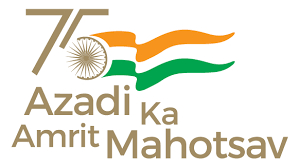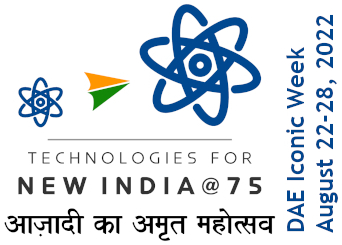Hedgehog Gold Nanoparticles: A Potent Candidate in Nanomedicine
Researchers from the Nanophotonics group of Chemical Sciences Division, SINP, have recently reported a one-pot synthetic methodology leading to gold nanostructures of high anisotropy resembling ‘Hedgehog’ without using any seed or surfactant. They have adopted a common salt induced synthetic strategy which has made these Hedgehog gold nanoparticles (HHogGNPs) stable under physiological saline condition without aggregation. Their size and morphology can be tuned simply by changing the concentration of common ion in the medium following Le Chatelier’s principle. Indeed they show broad-band plasmon tunability and huge surface enhanced Raman scattering (SERS). These HHogGNPs are non-toxic and costs approximately 600₹ per milliliter as indicated by Dr. Senapati, the PI of the Nanophotonics group. He, therefore, believes that these HHogGNPs are quite apt to work in the field of nanomedicine. The work has been recently published in the journal, Chemical Communications, 53, 10402-10405, 2017 [DOI 10.1039/C7CC05419J and first published on 25th August, 2017], one of the most cited journals in the field of General Chemistry.
.jpg)
Figure 1: Objective of the research activity in a schematic diagram.
In the report, it has been thoroughly discussed how the morphology of the hedgehog nanostructures is affected by common salt concentration considering several factors including tip curvature (κ), average aspect ratio (AAR), relative surface area (RSA), etc. Except at very low concentrations, the diameter of the synthesized HHogGNPs is independent of [Cl-] and remains constant at 220nm, although the numerical exposed surface area gradually increases and ultimately results in coreless spiky particles (Figure 2). From mechanistic point of view the role of NaCl governing the solubility of AgCl is illustrated which has been further supported by the HRTEM data.

Figure 2. TEM images of the HHog nanomaterials synthesized using (A) low concentrations of NaCl (up to 136 mM) and (B1–B6) tunable high concentrations of NaCl (170 mM–20 mM). Schematic representations of (C1) a 2D TEM image of an individual HHogGNP; (C2) a cone-shaped individual sharp tip; (C3) a model HHog structure for DDA and DDSCAT calculations created by Blender software; (C4) a 3D SEM image of a discrete HHogGNP.
Variable reaction condition dependent plasmon tuning has been summarized in Figure 3, which shows maximum plasmon tunability (530–1100 nm) as the common [Cl-] concentration is varied in the mother solution to offer a suitable material for plasmon spectroscopy.

Figure 3. Details of UV-vis-NIR absorption spectra obtained by (A) 1% TSC variation (0–2500 mL); (B) 1.5 mM AgNO3 variation (200–2500 mL); (C) pH variation (pH 1–12); (D) 1.7 M NaCl variation (1–1200 mL). In each plot, the arrow indicates the direction of shift of the wavelength with increments of the variables.
To measure the enhanced Raman cross section offered by the HHog surface, Rhodamine6G has been used in this study as the Raman tag. By comparing the Raman intensity of the 1511 cm-1 normal mode, both in the bulk as well as on the HHogGNP surface, the obtained G factor for the 670nm excitation is approximately 8.9X1010 which is at least 15 times greater than that of the 25 nm diameter TSC stabilized spherical gold nanoparticle having similar plasmonic properties, and is represented in Figure 4. Due to the resonance excitation of the 670 and 780nm plasmon bands, 170mM and 1.7mM NaCl-based HHogGNPs provide maximum Raman enhancement respectively.

Figure 4. Recorded SERS signals and relative SERS strength of the 1511 cm-1 Raman band (inset) from Rh6G with different NaCl-induced (blue: 170 mM, magenta: 1.7 mM, and violet: 25 nm diameter TSC-based spherical GNPs) HHogGNPs for laser excitation at (A) 670 nm and (B) 780 nm.
A theoretical study based on DDSCAT calculation by modeling the TEM images of the HHogGNPs has also been performed to understand their experimentally observed scattering and absorption patterns. More than 15 spikes are modelled in each of the HHogGNPs where ImageJ software is used to model the three-dimensional HHog shape from the two-dimensional projection of TEM images. With the help of Blender software, more than 40 objects have been considered to make a Hedgehog shape as shown in Fig. 2C3.
To check the non-toxicity of these HHogGNPs in the absence of light, an MTT-based dark-toxicity test has been carried out by selecting RAW 264.7 mouse macrophage cell lines. From Figure 5, the extent of survival is observed to change only negligibly after the addition of different doses of HHogGNPs in dark conditions indicating the applied HHogGNPs to be nontoxic in the absence of light.

Figure 5: A comparative study (n=3) among the obtained cell viability results for samples (Control: without nanomaterials; A & B: mother and centrifuged HHogGNPs solutions made with NaCl concentration at 1: 1.7mM, 2: 3.4mM, 3: 10.2mM and 4: 17mM) applied on RAW 264.7 mouse macrophage cell lines.
Spiky nanostructures are well-known to work as efficient heat-transducer in case of photothermal therapy of cancer affected cells and the group has now focused their investigation on the same, as Dr. Senapati told “We are currently exploring the real time applicability of these nano-hedgehogs for selective killing of cancerous cells”.
"Media Coverage"




